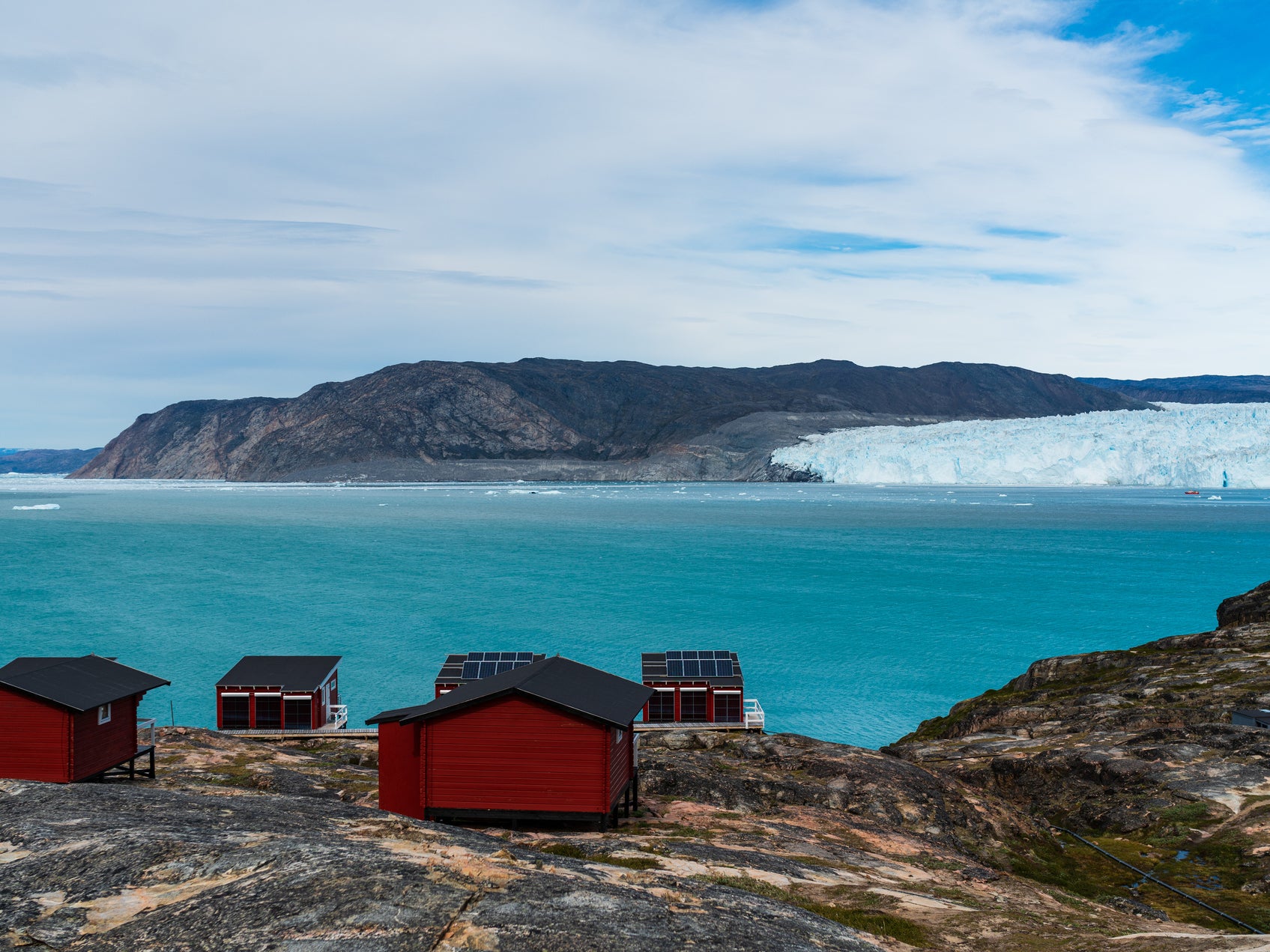Climate crisis: Earth has lost over 28 trillion tonnes of ice since 1994
Scientists alarmed by rapid acceleration of melting as greenhouse gas emissions continue to rise

Between 1994 and 2017 the Earth lost 28 trillion tonnes of ice and the rate of melting is accelerating rapidly, according to scientists who used satellite data and other models to detail for the first time the extraordinary total impact of the climate crisis on various bodies of ice.
The team of scientists from the Universities of Leeds and Edinburgh, and Imperial College London, studied the ice sheets in Antarctica and Greenland, glaciers across the world, and Arctic and Antarctic sea ice and ice shelves.
They found all areas had lost trillions of tonnes of ice, with 60 per cent of all melting occurring in the northern hemisphere.
While the melting of floating sea ice does not directly contribute to sea level rise, the huge volumes of grounded ice in Antarctica and Greenland which have melted, as well as that from glaciers, have already contributed as much as 3.5cm to global sea levels between 1994 and 2017.
Dr Isobel Lawrence, a research fellow at the University of Leeds and a co-author of the study, told The Independent that if 28 trillion tonnes of ice were distributed across the surface of Wales, the ice sheet would be 1.2km thick.
Despite the vast scale of the melting, she said the research team had not been surprised by the scale of the ice loss around the world, as they were already familiar with the regional estimates.
However she said they were alarmed by the rapid acceleration in melting which the research revealed.
Dr Lawrence said: “The thing which is most cause for concern is the [melt] rate we’ve calculated is accelerating. In the two decades since the 1990s, we’ve seen this estimate go up from 0.8 to 1.2 trillion tonnes of ice a year, so that’s a 57 per cent increase in one decade.
“If that continues, which it’s expected to because emissions are continuing to rise, then all of this melt is going to continue to accelerate.
“That has consequences for sea level rise. Greenland and Antarctic ice sheets and glaciers are grounded ice, so their melt contributes to sea level rise. The melt of sea ice and ice shelves doesn’t contribute to sea level rise because they float on water, and about 54 per cent of ice is floating and 46 per cent is grounded, so it means roughly half of the losses we’ve estimated are directly adding to sea level rise.”
She said Greenland and Antarctic ice sheet melt could contribute 25-30cm to global sea levels by the end of the century under the “worst case” scenario outlined by the Intergovernmental Panel on Climate Change, while thermal expansion of the oceans due to warming could also raise sea levels further.
The Greenland ice sheet alone holds enough water to raise the planet’s sea level by 7.4 metres, while the total melt of all ice in Antarctica would raise sea levels by around 60 metres, according to Nasa.
As well as sea level rise, the melting of such extensive masses of ice pose other problems. All the ice stored in glaciers and in the ice sheets of Antarctica and Greenland are composed of freshwater, and when they melt and drain into the oceans, the huge volumes of freshwater then change the salinity of the seas.
The difference between the salt water of the oceans and the large areas of freshwater can be sufficient to prevent the seasonal formation of sea ice, and in some areas, to alter how established ocean currents interact.
Dr Lawrence said: “In the Southern Ocean and the Arctic Oceans we’ve seen changes in circulation as a result of freshwater impact. What we don’t know yet is the result of that on the rest of the world, because global ocean circulation is all linked up.
“If this freshwater input causes a change in global ocean circulation – which some models have shown – then it could have consequences for the climate globally over a longer time scale.”
Previous studies have suggested changes to salinity could be responsible for a slowing down of currents such as the Atlantic “conveyor belt”, which brings the warm water of the Gulf Stream, and consequently a warm climate, to western Europe. Without it, winters in the UK could be around 5C colder, scientists have said.
In the latest study, the scientists reported that the majority of all ice losses were driven by atmospheric melting, with 68 per cent from Arctic sea ice, mountain glaciers, ice shelf calving and ice sheet surface mass balance.
The remaining 32 per cent of the losses were from ice sheet discharge and ice shelf thinning, which they said were being driven by oceanic melting.
The research has been published as a preprint in open access journal The Cryosphere and is yet to be peer-reviewed.
Total losses:
Arctic sea ice – 7.6 trillion tonnes
Antarctic ice shelves – 6.5 trillion tonnes
Mountain glaciers – 6.2 trillion tonnes
Greenland ice sheet – 3.8 trillion tonnes
Antarctic ice sheet – 2.5 trillion tonnes
Southern Ocean sea ice – 0.9 trillion tonnes
Join our commenting forum
Join thought-provoking conversations, follow other Independent readers and see their replies
Comments
Bookmark popover
Removed from bookmarks